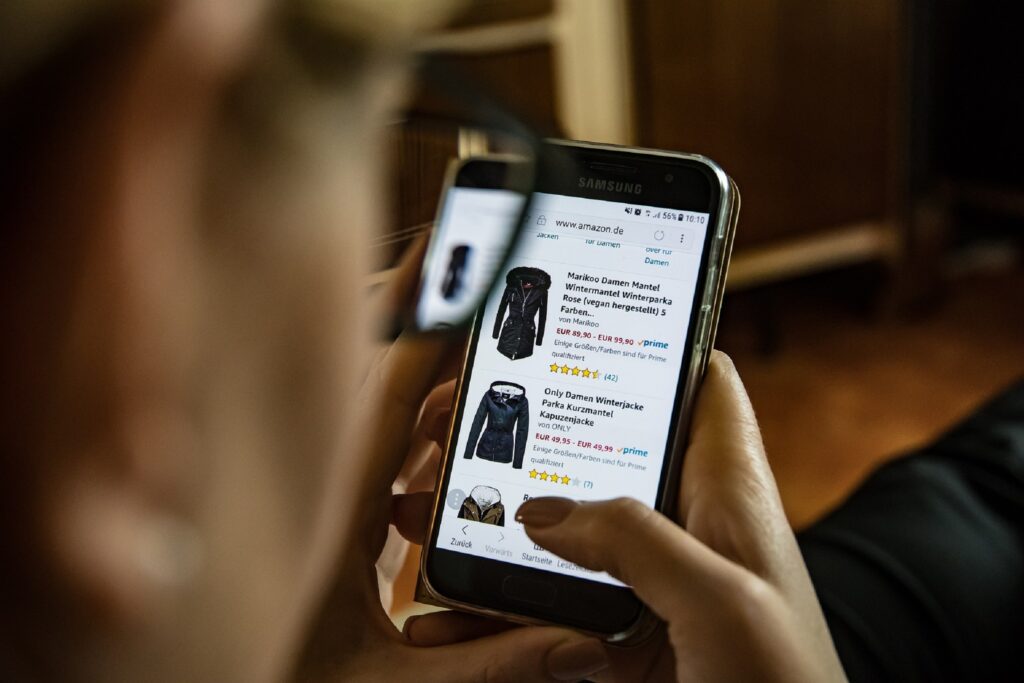It’s all around us- mobile commerce is a huge phenomenon. It is crucial for business owners to understand what mobile commerce is and the potential it holds. Smartphones nowadays lie within arm’s reach of modern customers. Thus, it shouldn’t surprise you that mobile shopping applications are evolving with consumers’ shifting behavior. About 54 per cent of all the e-commerce sales are augured to come from nowhere other than mobile devices by 2021. This led to a rise in worldwide mobile-eCommerce sales to touch $3.56 trillion, which is tremendously higher than 2020 (just 22%).
With mobile shopping becoming dominant on the scene, developers have been continuously diversifying, improving, and expanding the potential and reach of their applications. Thus, the growth of mobile shopping apps and trends related to them now requires proper elaboration. And here it is. Read on!
The rise & growth of mobile shopping apps
Amid the COVID-19 pandemic, mobile shopping applications have occupied a central role in online retail functions.
The CEO of Quotient, Steven Boal, once said, “I believe shopping applications are popular with consumers because they are a remarkable way to experience a brand in an immersive digital setting. Akin to a brick-and-mortar store where shoppers can feel a shopping environment created and developed for physical discovery, mobile shopping apps can offer the same experiential effect, with the extra value of convenience to enjoy it anywhere and anytime”, he added.
Read More: Why Accurate Forecasts Can Help Weather The Economic Storm
Branding by mobile application
Thanks to their convenience, mobile apps have become a crucial method for businesses and brands to create an identity and develop a connection with consumers. The consumer experience according to the CMO of Tealium, Heidi Bullock, the consumer experience is extremely convenience-driven nowadays. Quality shopping apps created to operate on tablets and smartphones enable customers to relish an exceptional experience with a particular brand anytime and from anywhere.
Instead of needing to vet online for coupons and deals or scrounge through emails for past product orders, mobile shopping applications offer the convenience of a unified hub for creating a relationship between the consumer and a brand. Despite one’s “busyness” one can restock their coffee, kids’ diapers, and other stuff conveniently by enjoying the feature of shop-in-the-moment and convenience. Shopping applications, thus, offer an experience that is personalized and in line with their best experience with their brand.
Now, what do you mean by the best shopping app? Well, it entails many things. And one of the crucial things you need to know here is that an ideal shopping app supports and aligns with the customer’s entire experience. Furthermore, mobile applications should be intuitive and offer easy navigation, so the customer may find the right products without losing their head. They also have seamless commerce and payment flows; beyond everything, they aim to create out-of-the-world experiences as much as possible.
What would future apps look like?
Shopping applications won’t stop evolving; a simple reason is that human needs, expectations, and desires are constantly evolving. Where some consumers are at ease in going to brick-and-mortar stores now, several brands must keep on maintaining and growing their digital storefronts and physical ones in the future.
Future successful applications in shopping will intend to connect with customers through AI, VR, etc. The future will be more data-driven to offer the customer more personalized experiences. Advertising the products won’t be sufficient; however, you will need to engage your potential clients and consumers via approaches like custom UX for each customer on every mobile shopping app, seamless checkouts, and tailored remarketing.
The initiation of this can already be noticed with the incorporation of marketplaces and social media on platforms like Instagram and Facebook. An impeccably-customized online experience between the business and social world is the next step in our world customized to every individual’s needs. Personalization is a big part of a user-friendly and intuitive app experience. Another metric one needs to focus on in future-oriented apps is speed and how quickly they can be used.
The goal here is to make it as simple and quick as possible and reduce time-in-app for conversion.
Mobile app shopping has seen impressive and terrific growth since 2020. The growth of m-commerce can be directly associated with how users access the web.
As high-speed internet and smartphones become accessible, users have dodged PCs in favor of smartphone tabs and other smaller gadgets for internet browsing. The cost of developing a mobile commerce store varies according to complexities, features, and customization. Are you ready to leverage the power of mobile shopping apps? Head on!
Read More: SalesTechStar Interview with Bart De Muynck, CIO at project44





















